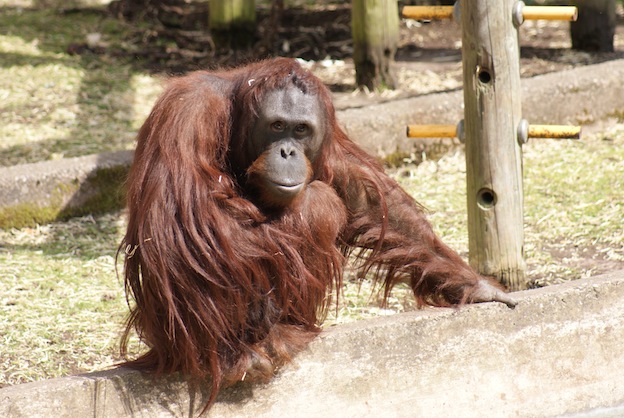Orangutans in Zoos
Many orangutans live in zoos and are in circus performances out there. These animals in captivity seem to do very well. Many are against that being part of how they live though. They also don’t like to see these animals exploited in movies, commercials, and other ways to make money for people. There has been quite a movement for the ethical care of orangutans in captivity due to things that have taken place before that weren’t acceptable.
Many people are outraged by the use of orangutans in Hollywood as well. It has been quite a controversy for some time. The film Every Which Way but Loose is one that many people love. It features Clint Eastwood and an orangutan called Clyde. This animal died soon after the show was finished. It later came out that the animal was beaten by a trainer with both a cane and the handle of an ax to get him to perform correctly.
A performer in Las Vegas known as Bobby Berosini used five orangutans as part of his nightly performances. However, a hidden camera showed him beating these animals backstage in order to train them. The pressure put on him and the government due to the release of these tapes resulted in him no longer being able to have access to these animals legally.
Thanks to the efforts of PETA and other animal rights activists, there are strict laws in place for the training and the care of these animals. Many zoos have developed habitats for orangutans that are very common to what they would be a part of in the wild. This is part of making sure these animals are happy. They also make sure that the basic needs of them are met in terms of their food and entertainment.
The one thing that you will find different in captivity is that orangutans are often placed in small groups. In the wild they would be alone with the exceptions of when they are mating or caring for their young. While they do adapt to this format, many find that it isn’t fair to place them in such groups when instinctively they aren’t like other apes including gorillas.

Many zoos simply don’t have the money to give them individual shelters though. What they have done though is created huge outdoor environments for orangutans to survive in. They will create their own territories within it. Each orangutan also has access to an indoor cage that they can go into at any time for solitude. The problem though is that humans will likely be on the other side of the glass. This is why you will often see them with their backs to the glass when they are inside.
The life span for an orangutan is about 50 years in captivity and 35 – 40 years in the wild. They do seem to do quite well in captivity, especially those that are there from the time they are born. While we have learned a great deal about orangutans in such a setting, the desire of many to see them only in the wild continues.
Even with many orangutans in captivity, the rate of reproduction is very slow. They take care of their young for about 7-8 years before they will mate again. If they lose a baby they will mate but that doesn’t help increase the numbers. In some facilities they have removed the young from the mother to get her to mate sooner. Yet this often deprives the offspring of the ability to learn many important skills. One of them is how to properly care for their own young in the future.
